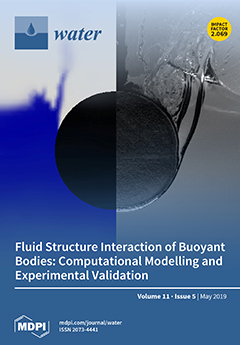This work aims to investigate the methane emissions from integrated vertical-flow constructed wetlands (IVCWs) when ethanol is added as an external carbon source. In this study, a gradient of ethanol (0, 2, 4, 8, 16 and 32 mmol/L) was added as the carbon
[...] Read more.
This work aims to investigate the methane emissions from integrated vertical-flow constructed wetlands (IVCWs) when ethanol is added as an external carbon source. In this study, a gradient of ethanol (0, 2, 4, 8, 16 and 32 mmol/L) was added as the carbon source in an IVCW planted with
Cyperus alternifolius L. The results showed that the methane emission flux at an ethanol concentration of 32 mmol/L was 32.34 g CH
4 m
−2 day
−1 less than that of the control experiment (0 mmol/L) and that the methane emission flux at an ethanol concentration of 16 mmol/L was 5.53 g CH
4 m
−2 day
−1 less than that at 0 mmol/L. In addition, variations in the water quality driven by the different ethanol concentrations were found, with a redox potential range of −64 mV to +30 mV, a pH range of 6.6–6.9, a chemical oxygen demand (COD) removal rate range of 41% to 78%, and an ammonia nitrogen removal rate range of 59% to 82% after the ethanol addition. With the average CH
4-C/TOC (%) value of 35% driven by ethanol, it will be beneficial to understand that CH
4-C/TOC can be considered an ecological indicator of anthropogenic methanogenesis from treatment wetlands when driven by carbon sources or carbon loading. It can be concluded that adding ethanol as an external carbon source can not only meet the water quality demand of the IVCW treatment system but also stimulate and increase the average CH
4 emissions from IVCWs by 23% compared with the control experiment. This finding indicates that an external carbon source can stimulate more CH
4 emissions from IVCWs and shows the importance of carbon sources during sewage treatment processes when considering greenhouse emissions from treated wetlands.
Full article





